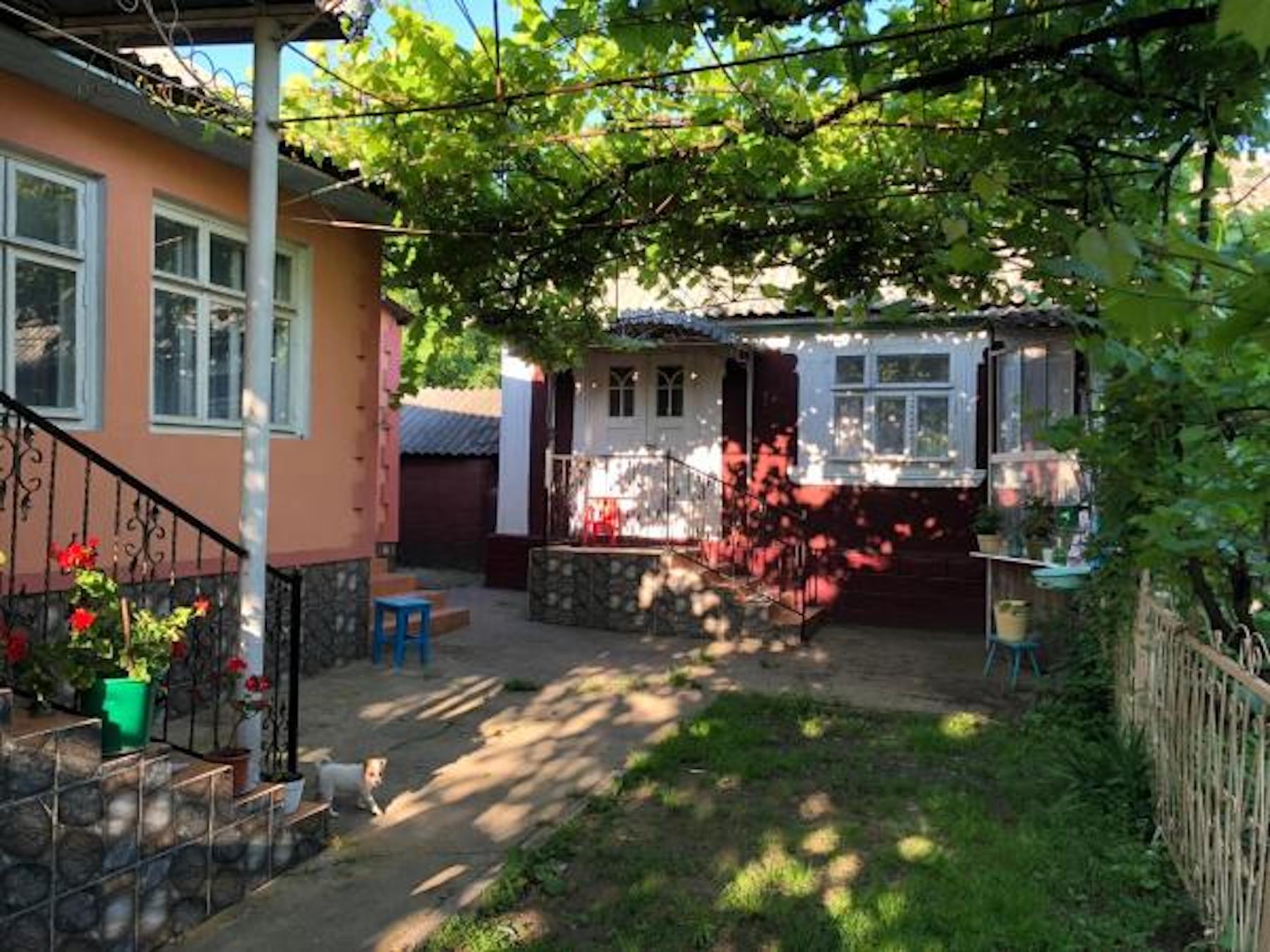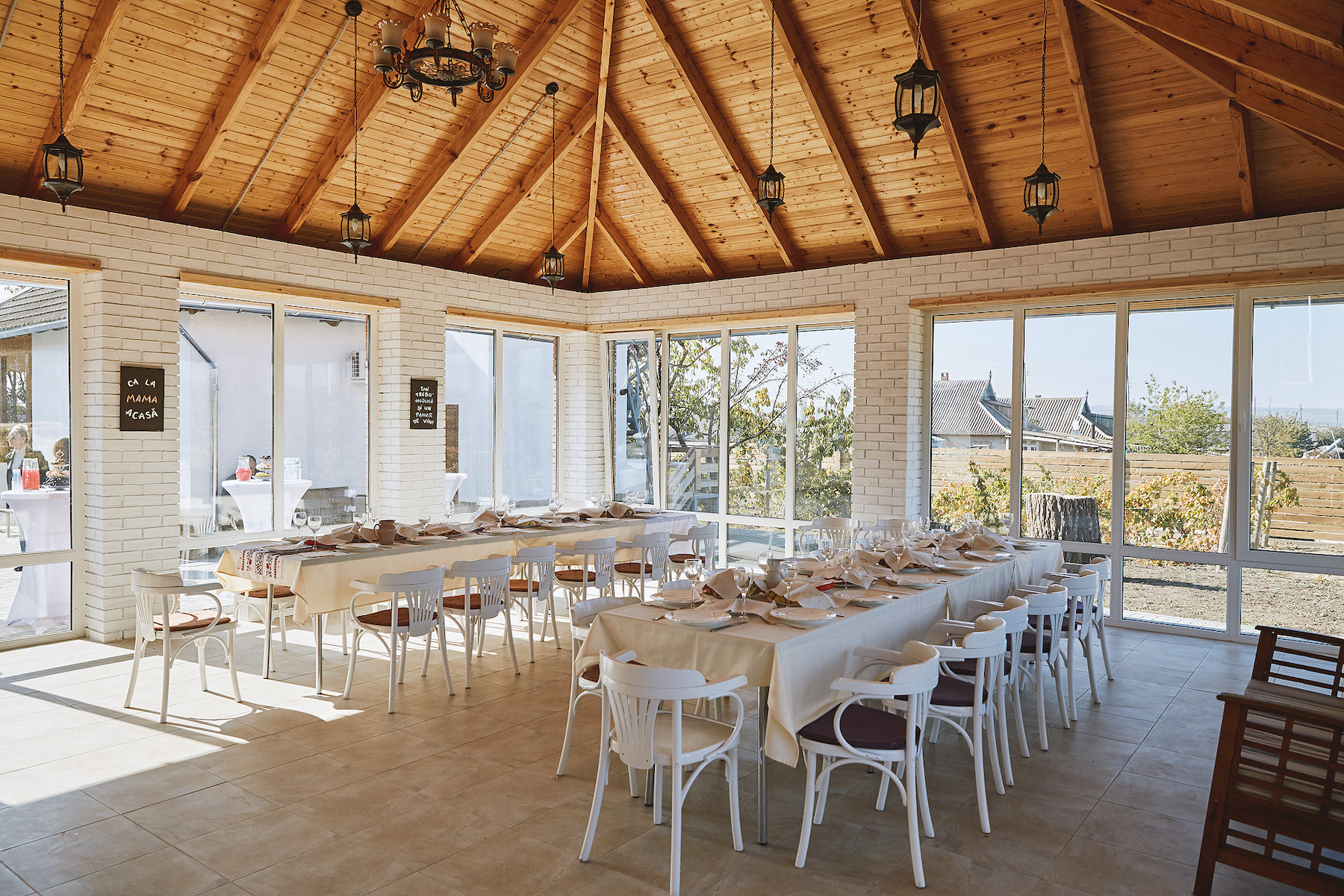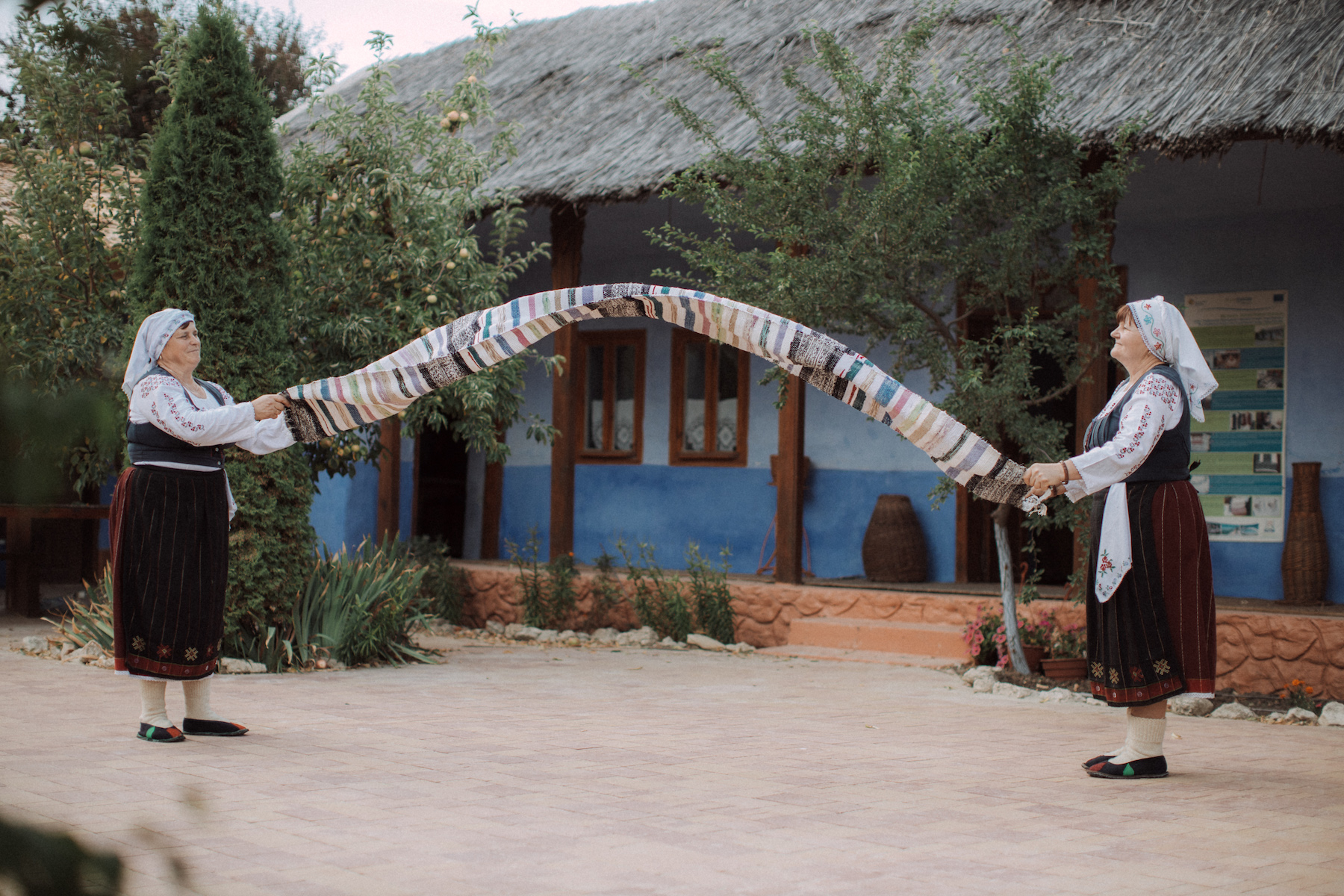Vila Dora is a country inn with old wooden floors, huge traditional carpets and rustic furnishings near the Dniester River. The food the owners serve is not only authentic Moldovan, but as fresh as can be. The inn located in an enchanting region, both in terms of nature and spirituality. Two nearby landmarks are the Japca Monastery and Moldova’s largest Jewish cemetery in the village of Vadul-Rascov. Vila Dora is also close to the medieval fortress at Soroca and the 30-meter-tall Candle of Gratitude Monument. The writer Ion Durta came up with the idea of creating a monument to honor those who have made special efforts to preserve Moldovan culture. It was erected in 2004.
Vila Dora
Casa Veche
Casa Veche is a more than 100-year-old village house that will give you an idea of how rural Moldovans lived at the turn of the 20th Century. Its owners decided recently to turn it into a bed and breakfast for those looking for a traditional country experience, which can include seeing horse-drawn carts. The food at Casa Veche, which is close to the Dniester River and the Ukrainian border, is all-natural. An interesting story about Palanca village is that an agreement in 2012 that ended a border dispute between Ukraine and Moldova meant that many villagers’ homes were still in Moldova while their farmland suddenly ended up in Ukraine. A new border checkpoint in 2018 has made it easier for the villagers to tend those plots.
Eco Village Vаleni
The owners of Eco Village Valeni will not only provide you with lodging, but also wooden boats you can use to glide across Lake Beleu, one of Eastern Europe’s most pristine bodies of water. In the boats you can float among water lilies so lovely that it looks like they have been painted on the lake’s surface. If you like fishing, try your luck! An amazing sight is flocks of water birds arriving in Lake Beleu, particularly pelicans. The village of Valeni offers delights as well. You can watch traditional carpets being made on sturdy old looms or visit the Bread Museum, which contains dozens of varieties of this Moldovan staple. Another intriguing spot is a wine cellar with a secret chamber where the women of Valeni hid from invading soldiers in both world wars.
BRISTOL HOTEL****
Amplasat lângă Parcul Central, hotelul Bristol permite liberul acces către principalele destinații turistice ale orașului, precum și către cele mai bune restaurante. Locația reușește să combine frumos camerele de calitate înaltă cu alte facilități, precum sală de sport, trei săli de conferințe și trei restaurante care oferă o varietate mare de experiențe gastonomice.
LONDON BOUTIQUE HOTEL****
The idea behind the London Boutique Hotel, which is situated in a restored Bessarabian Mansion, is to give guests the impeccable quality and service they would find in a good London hotel. The rooms are luxurious, tasteful but understated British, from the carpet to the Victorian-style chairs to the richly stained desks. To spoil its guests, the London Boutique fitted each room with a small spa. The hotel conference room, with its dark paneling, floor-to-ceiling mirrors and huge wooden center table, is the most luxurious in Chisinau. The London Boutique is minutes away from many of Chisinau’s political and cultural landmarks.
REGENCY HOTEL****
The Regency Hotel is known for its central location, simple but luxurious rooms, comfortable beds and great service. Although it was built in 2012, it looks brand-new, and its bathrooms sparkle. The hotel is close to Moldova’s Parliament Building, the Natural History Museum, Stefan cel Mare Park and other landmarks. The friendly staff can quickly line up tours for you of Chisinau and surrounding areas, particularly the alluring wineries.
CASA DACĂ BOUTIQUE HOTEL
The Casa Daca is a new boutique hotel that offers guests a blend of traditional and contemporary minimalist styles that complement each other, creating a comfortable mood. The owners were determined to give clients the best that Moldova can offer – hospitality, ambience, superb food and fabulous wine. Two talented young chefs create authentic Moldovan meals for you in the Den restaurant, where candles produce a romantic glow. Casa Daca is named for the Dacians, an ancient people who lived in today’s Moldova and Romania.
CITY PARK HOTEL****
The City Park Hotel is on a wide, cobblestoned walkway two minutes from Chisinau’s largest green space, Central Park. A bronze statue of a young man waiting impatiently for his girlfriend, who is walking slowly with high-heeled shoes in her hand because of sore feet, will put you in a good mood whether you’re walking to or from the hotel. City Park is a boutique hotel with a pleasant atmosphere and attentive staff. Since it is strategically placed, guests are close to excellent restaurants and coffee shops, theaters, museums, an open-air souvenir and crafts market, and other attractions.
ZENTRUM HOTEL****
The celebrated Russian architect Alexandru Bernardazzi designed the building that now houses the Zentrum Hotel in 1875. When the structure was converted into a hotel, each of its rooms was designed individually. Underscoring the value that the owners attach to art, the rooms are named for renowned artists – from Vincent van Gogh to Vasili Kandinsky and from Arush Votsmush to Mark Verlan. Such landmarks as the Birth of Christ Cathedral, National Assembly Square and Chisinau City Hall are just minutes away by foot.


